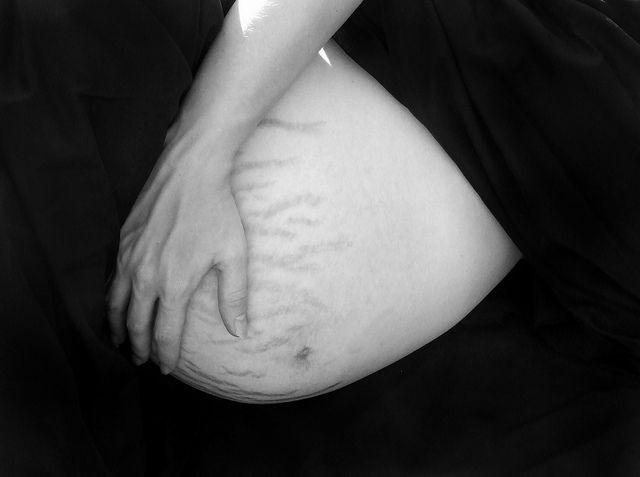Gene Hunter Company, 23andMe, Tracks Down 4 Traits Linked To Stretch Marks: Do You Have Them?

23andMe, the genomics company known for its personal DNA kits for disease-risk analysis, has capitalized on its massive database of genetic material to find a possible answer to one of life’s most annoying questions: what causes stretch marks?
"To date, no genetic variants were known to be associated with isolated stretch marks that affect the general public," said Dr. Joyce Tung, author and 23andMe Director of Research. "Through this first-of-its-kind study, we've identified new genetic associations that can provide deeper insights into the root causes of stretch marks, and look forward to continuing research in this space."
Also known as “striae distensae,” stretch marks are those unsightly bands of red skins that pop up during a pregnancy, when a person becomes overweight, or during puberty-triggered growth spurts. Extra tension on the skin, due to additional weight or muscle mass, is the simple explanation for stretch marks; however, for an unknown reason, some people are more prone to developing them. It is estimated that anywhere between 50 to 80 percent of the population has stretch marks.
To search for possible mutations linked to the condition, the California-based company conducted a genome-wide association study that screened the DNA from 34,000 unrelated volunteers of European descent, which included 14,000 cases of striae distensae. Within the whole group, 19,000 were men, but women were more than twice as likely – 25 percent versus 55 percent – to suffer from stretch marks, which was consistent with prior studies on striae distensae.
Mutations in or near four genes – ELN, SRPX, HMCN1, TMEM18 — were significantly correlated with stretch marks. Of this subset, ELN (short for elastin) had the strongest association, especially in a secondary subset of pregnant women who had suffered from stretch marks
This latter finding didn’t surprise the authors. Elastin is a key component of connective tissue that allows skin to return to its initial shape after being pinched or poked. In addition, mutations in elastin genes have been linked to inherited disorder called cutis laxa, which features loose and sagging skin.
“These findings may provide further insight into future methods for the prevention and treatment of stretch marks,” wrote the authors, whose open-access findings were published today in the Journal of Investigative Dermatology. “Interestingly, most popular treatments including topical treatments and laser treatments focus on stimulating collagen production, rather than elastin production, to improve the appearance of stretch marks, although some also increase elastic fibers.”
One of the isolated genes — TMEM18 — had been previously linked to obesity, which 23andMe plans to examine further in follow-up study. “One intriguing area for further study is the potential effect of genes associated with obesity on the development of stretch marks, both independent of and via changes in BMI,” remarked Dr. Tung. “Replicating this work in a more precisely phenotyped population would also be a logical next step."
Source: Tung JY, Kiefer AK, Mullins M, Francke U, Eriksson N. Genome-Wide Association Analysis Implicates Elastic Microfibrils in the Development of Nonsyndromic Striae Distensae. Journal of Investigative Dermatology. 2013.
Published by Medicaldaily.com



























